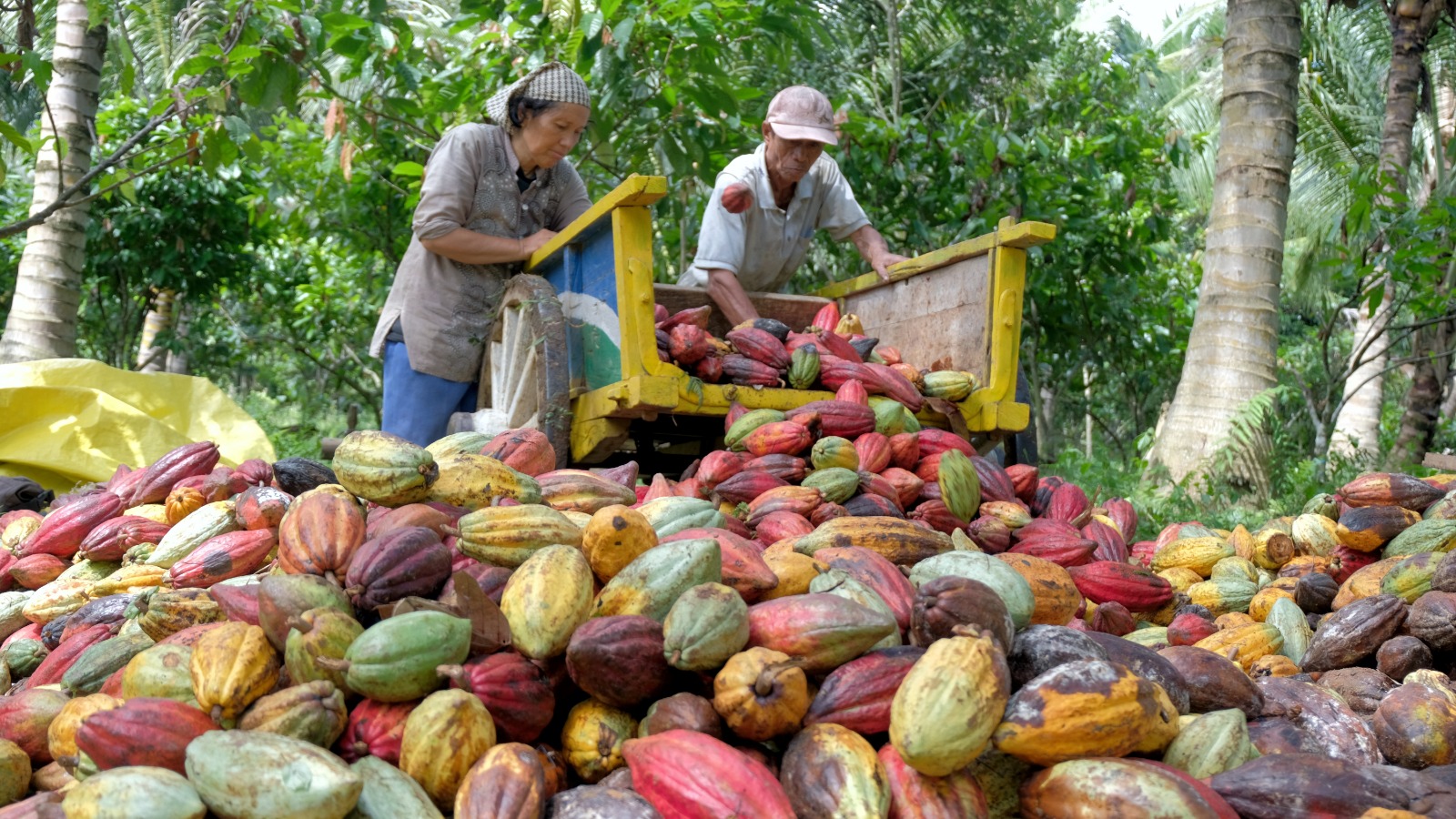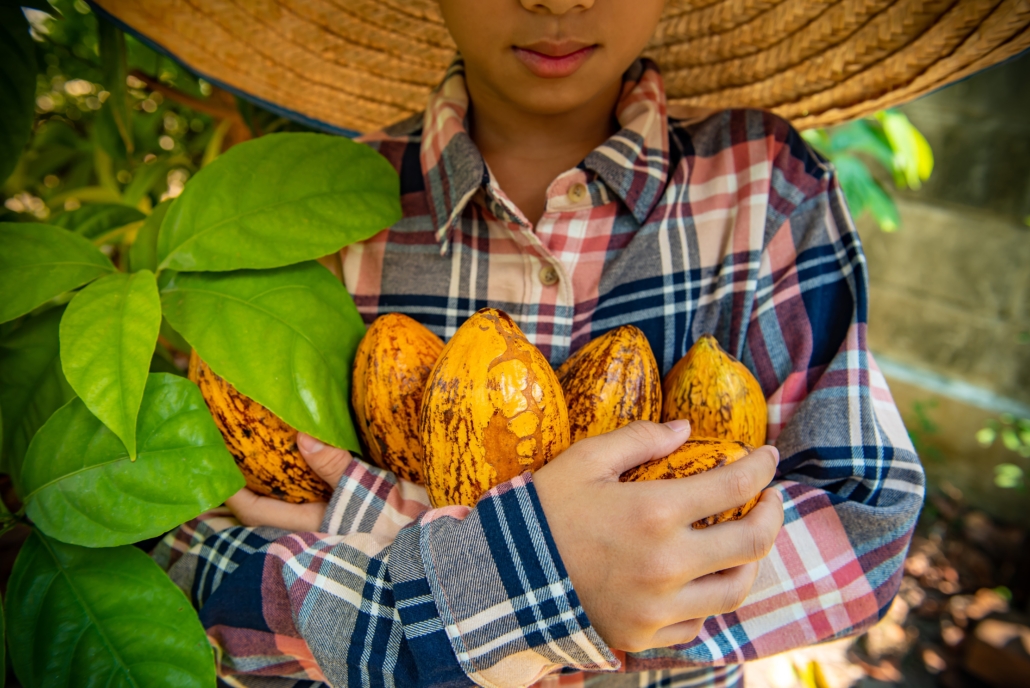What are the trends for the demand for cocoa products? Can cocoa products combine gluttony and health?
We have already talked about cocoa, but there are so many things to say about this fascinating product that whets our appetite!
The cocoa industry
Cocoa harvesting is generally done manually, as mechanised systems might damage the trees and the beans. However, the cocoa production has been significant, as about 4 million tonnes of cacao beans have been produced annually in the world since 2010. When the beans are manufactured, they are first transformed into cocoa liquor and then into cocoa butter or cocoa powder to produce chocolate, cosmetics and numerous food items (Voora, Bermúdez, & Larrea, 2019).
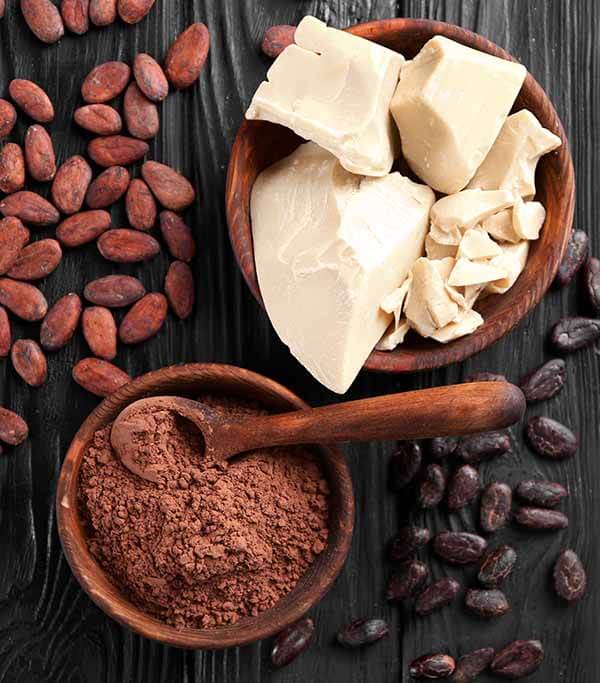
Cocoa beans, cocoa powder and cocoa butter. Source: Aviana website (27/07/2021)
Cocoa beans are then exported by the producing countries in diverse forms, such as whole or broken, raw or roasted. In 2017, exported beans had a combined value of 8.6 billion USD and the global cocoa bean market is expected to grow in the next few years, driven primarily by its involvement in the food and beverage industry. More specifically, it is planned to reach 16.32 billion USD by 2025 (Voora et al., 2019).
The cocoa sector plays a vital role as a source of livelihoods, both in the exporting and importing countries, as it generates jobs not only in the production field but also in the manufacturing, processing and sales sectors (Voora et al., 2019).
Given its global economic importance, cocoa is a commodity listed in the stock exchange, just like coffee – whose stock exchange variations can be followed on our website. Find out more about cocoa’s current and future prices.
The demand for cocoa and the European market
The demand for cocoa beans varies depending on the country, but generally speaking Europe is an interesting market for cocoa, as it has an important processing and manufacturing industry which requires significant volumes of cocoa beans.

Fresh cocoa pod cut exposing cocoa seeds, with a cocoa plant in background
Europe is the world’s largest chocolate manufacturer and export market and has the world’s highest industrial demand for cocoa beans. The share of European grindings is the largest in the world, with 37% of global grindings in 2018/2019, corresponding to an estimated 1,748 thousand tonnes of cocoa beans. In particular, the Netherlands was the world’s largest cocoa bean grinder in 2018/2019, with a cocoa demand corresponding to 605 thousand tonnes, that is to say 13% of global grindings (CBI, 2020).

ILHEUS, BAHIA / BRAZIL – March 26, 2012: Landing of cocoa beans in the port of Ilheus (BA), exported from Ivory Coast (Joa Souza)
The European market being very diverse, Europe offers opportunities for suppliers of cocoa beans whether mainstream or specialty (CBI, 2020). The demand for chocolate with perceived healthy characteristics and exotic flavours is in fact expected to grow in Western Europe and in North America, the traditional chocolate consuming markets (Voora et al., 2019).
The countries with the highest per-capita chocolate consumption are in Europe, where the averages are significantly higher than the world’s average chocolate consumption, amounting to about 0,9 kg per capita per year. The largest chocolate consumer country is Germany, with a per capita consumption of 11 kg in 2018, followed by Switzerland, with 9.7 kg per capita in the same year, and by Estonia, with 8.8 kg per capita (CBI, 2020).
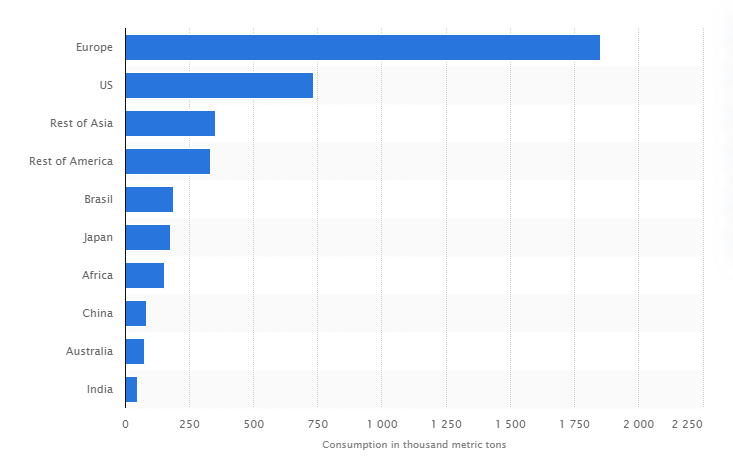
Global consumption volume of cocoa in 2016, by region (in 1,000 metric tons).
Source: (Shahbandeh, 2019)
The effects of the pandemic on the cocoa and chocolate sector
The Covid-19 pandemic has affected almost every sector worldwide. We have talked about its effects on the coffee field, but the cocoa sector was equally affected.
The loss of impulse sales, fewer gifting occasions and a disrupted Easter period in 2020, significantly affected chocolate confectionery, notably categories such as boxed assortments, which already tended to be seen as old-fashioned and were therefore experiencing a lower demand even before the Covid-19 outbreak (Euromonitor International, 2021).
The pandemic has also affected the demand for seasonal chocolate. In fact, in most countries the Easter holidays occurred in the first period of national lockdowns, and this had a negative effect on the sales of chocolate eggs, as friends and family get-togethers were not allowed (Euromonitor International, 2021).
Despite these negative effects, however, sales of products such as chocolate bars increased as at-home snacking. In particular, the greatest sales of chocolate bars were in the UK, but the same phenomenon was registered also in other countries, such as Turkey (Euromonitor International, 2021).
The demand for sustainability in the cocoa sector
Sustainability is one of the key words of these years. We have already talked about the importance of consumer awareness and the role of sustainability certifications. We will now discuss the way sustainability affects the demand for chocolate and cocoa products.
Consumer awareness is growing and the industry profile is shifting towards sustainability. That is why the Voluntary Sustainability Standards (VSS) were introduced in the cocoa sector over 20 years ago, in order to offer consumers more sustainable cocoa purchasing options. VSS is a labelling system which offers producers a way to distinguish their products in the marketplace, provided that they adopt more sustainable production systems both on the socio-economic and environmental level (Voora et al., 2019). Consumers are in fact becoming increasingly aware of the importance of sustainability, and with more conscious choices in terms of purchase they may contribute to the fight against income disparities, child and forced labour and deforestation.
The effects of cocoa on consumers’ health: sin of gluttony or healthy product?
What if cocoa, the symbol of the sin of gluttony, was actually good for your health?
Chocolate and cocoa as potential sources of antioxidants for health were mentioned in a medical journal for the first time at the end of the 1990s. Since then, many studies have been conducted on this topic (Cooper, Donovan, Waterhouse, & Williamson, 2008).
Cocoa, in fact, seems to improve antioxidant status and to have anti-inflammatory effects. Moreover, it is considered to be connected to reduced heart-disease risk. Cocoa consumption is said to have positive effects in reducing the risk of hypertension and cardiovascular diseases and on vascular endothelial function and platelet activity, lipid and lipoprotein metabolism, insulin sensitivity, and cerebral blood flow and neurocognitive functioning (Donovan, Holes-Lewis, Chavin, & Egan, 2011).
Cocoa, like green tea (read our article about tea), is rich in polyphenols, notably in their sub-class called flavanols (Cooper et al., 2008), which have been studied to better understand the connection between cocoa and health.
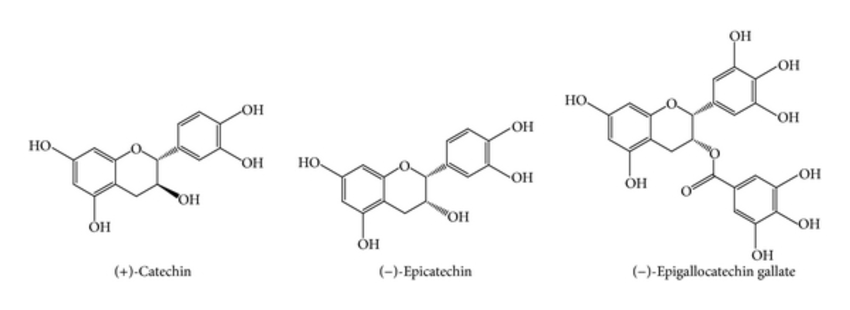
Structure of main cocoa polyphenols. Source: (Ackar et al., 2013)
Cocoa is generally associated with chocolate, being its main ingredient, and chocolate can be found in different forms with diverse polyphenol levels. Generally speaking, dark chocolate with a high percentage of cocoa tends to be richer in polyphenols, but this is not a strict rule. For this reason, it is difficult to say whether chocolate is good for your health or not, and what type of chocolate is most recommended (Cooper et al., 2008).
Despite the positive effects that cocoa might have on blood pressure, insulin resistance, and vascular and platelet function, however (Corti, Flammer, Hollenberg, & Lüscher, 2009), there are also potential downsides to cocoa consumption. For example, excessive cocoa consumption may result in negative health effects such as obesity, testicular cancer, acne, and dental caries (Donovan et al., 2011).
Considering this, the key solution is probably a balanced and varied diet, while for individuals suffering from specific diseases and pathologies it is better to follow the instructions of an expert.
Coffee Tea Cacao Russian Expo
As we are interested in coffee, tea and cacao, it may be worth mentioning an expo concerning precisely these topics. It is the Coffee Tea Cacao Russian Expo, an international expo taking place in Russia and including exhibitions, conference programs, educational seminars and master classes, tastings, professional competitions for baristas, roasters and tea masters (Coffee Tea and Cacao Russian Expo, n.d.).
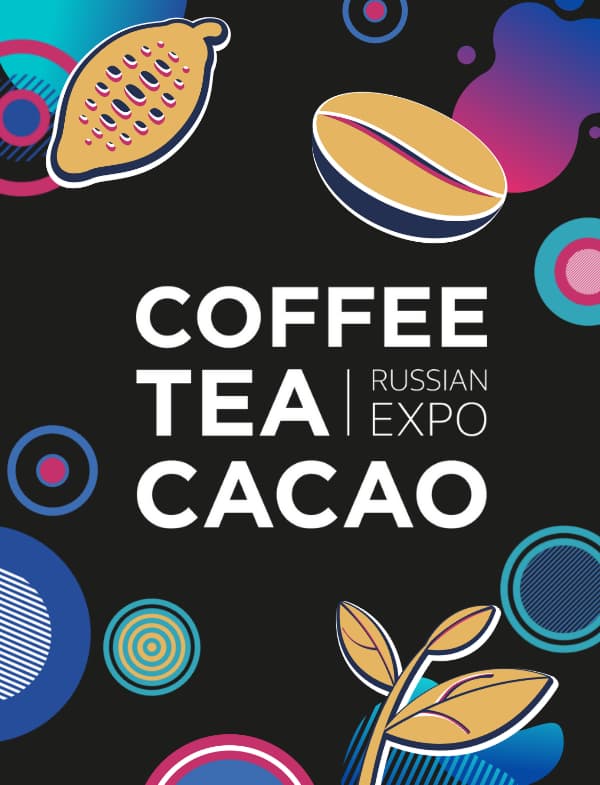
Source: (Coffee Tea and Cacao Russian Expo, n.d.)
The expo lasts 3 days and involves 170 exhibitors such as suppliers of raw materials, equipment, accessories, freshly roasted coffee, exclusive teas, bean-to-bar chocolate, bakery manufacturers and confectionery and more than 7000 professional visitors (manufacturers, distributors, retailers and wholesalers, representatives of the HoReCa segment (coffee houses, bars, restaurants), specialized shops, barista and tea masters. During the expo about 150 events – such as round tables, presentations and tasting for professionals of the sector – take place in the 5,600 square metres dedicated to this international fair (Coffee Tea and Cacao Russian Expo, n.d.).
Visit the Coffee Tea Cacao Russian Expo website to access all details.
Bibliography
Ackar, D., Lendić, K., Valek, M., Šubarić, D., Miličević, B., Babic, J., & Nedić, I. (2013). Cocoa Polyphenols: Can We Consider Cocoa and Chocolate as Potential Functional Food? Journal of Chemistry. Retrieved from https://www.researchgate.net/figure/Structure-of-main-cocoa-polyphenols-60_fig1_267031428
CBI. (2020). What is the demand for cocoa on the European market? Retrieved July 21, 2021, from Market Information website: https://www.cbi.eu/market-information/cocoa/trade-statistics
Coffee Tea and Cacao Russian Expo. (n.d.). Coffee Tea and Cacao Russian Expo. Retrieved July 21, 2021, from https://coffeetearusexpo.ru/en
Cooper, K., Donovan, J., Waterhouse, A., & Williamson, G. (2008). Cocoa and health: a decade of research. British Journal of Nutrition, 99(1), 1–11. doi: 10.1017/S0007114507795296
Corti, R., Flammer, A. J., Hollenberg, N. K., & Lüscher, T. F. (2009). Cocoa and Cardiovascular Health. Circulation, 119(10), 1433–1441. Retrieved from https://www.ahajournals.org/doi/full/10.1161/CIRCULATIONAHA.108.827022
Culliney, K. (2018). Healthy chocolate? Colombia’s CasaLuker files patent for high-antioxidant cocoa powder. Food Navigator-Laram.Com. Retrieved from https://www.foodnavigator-latam.com/Article/2018/05/08/CasaLuker-Colombia-patent-for-high-polyphenol-cocoa-powder-healthy-chocolate
Donovan, J. L., Holes-Lewis, K. A., Chavin, K. D., & Egan, B. M. (2011). Cocoa and health. In A. Crozier, H. Ashihara, & F. Tomás-Barbéran (Eds.), Teas, cocoa and coffee: plant secondary metabolites and health (pp. 219–246).
Euromonitor International. (2021). Chocolate Confectionery in Western Europe. Retrieved from https://www.euromonitor.com/chocolate-confectionery-in-western-europe/report
Shahbandeh, M. (2019). Cocoa consumption worldwide by region 2016. Retrieved from https://www.statista.com/statistics/263150/consumption-of-cocoa-by-continent/
Voora, V., Bermúdez, S., & Larrea, C. (2019). Global Market Report: Cocoa. Retrieved from https://www.iisd.org/system/files/publications/ssi-global-market-report-cocoa.pdf
Picture credits: ifnot otherwise specified, the pictures were purchased by the ArtOn Café director
